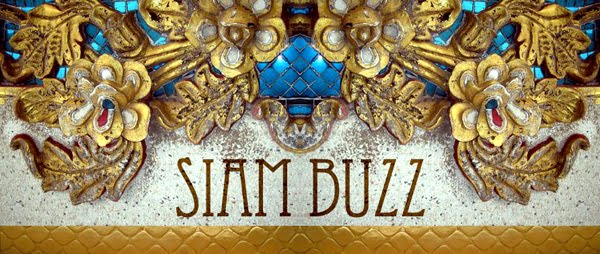This past weekend a visiting friend and I hopped a local mini-van to visit the famed city of Ayutthaya, a place I’ve being wanting to visit ever since I moved to Thailand. As ever, first a little background info to start us off. Ayutthaya, full name Phra Nakhon Si Ayutthaya, is an ancient capital and modern city in the Central Plains of Thailand, 85 km north of Bangkok. Founded around 1350, Ayutthaya became the second capital of Siam after Sukhothai. Throughout the centuries, the ideal location between China, India and the Malay Archipelago made Ayutthaya the trading capital of Asia. By 1700 Ayutthaya had become the largest city in the world with a total of 1 million inhabitants. All this came to ahead when the Burmese invaded Ayutthaya in 1767 and almost completely burnt the city to the ground.
The places we did go our as follows: Wat Phra Si Sanphet; the largest temple in Ayutthaya, known for its row of chedis (Thai-style stupas); Viharn Phra Mongkol Bopit, an impressive building that houses Thailand’s largest (approx. 5m wide and 12m high) bronze cast Buddha image; Wat Phra Mahathat, a large temple that was quite thoroughly ransacked by the Burmese. This is also where you can spot the famous tree that has grown around a Buddha head; Wat Ratchaburana, this temple stands out for having a large prang recently restored to its original condition; Wat Thammikarat, a working wat, that contains the ruins of a large chedi and a huge viharn (sermon hall) which has a large tree growing picturesquely out of the side of one wall; Wat Lokayasuthatsm, where can be seen an impressive reclining Buddha and Wat Chai Watthanaram, a very large temple that the locals says is same-same Angkor Wat (even though it’s not thing alike in my humble opinion) and has a great view from the top and lovely position on the river.
As to getting around, you have several options. The “official” tuk-tuk drivers will show you a card and map that states gov’t fees are Bht 200/hour to visit the ruins. However, these prices are apparently not set in stone and it’s possible to haggle if you so desire; we got a three-hour package of sight-seeing (7 sites) for Bht 500. And for those feeling more adventurous or energetic, hiring a motorbike or bicycle is a good way to go. Alternatively many Bangkok companies offer a day (or as many as three) boat trip, ranging in price from Bht 1,000-3,000 depending on the boat, group size, inclusions, etc.
All up Ayutthaya makes for a very nice day-trip from Bangkok. However, I give one caution. If you have been to the temples of Siem Reap in Cambodia or Bagan in Burma, or are planning to go, then I would not bother, these ones will pale severely in comparison and you feeling flat in comparison. Then again, if you’re in the mood for a pleasant day away from the hustle and bustle of Bangkok then go for it.
Getting there: The quickest and easiest way to get there from the Siam City Hotel is to take a mini-van (Bht 60) from Victory Monument. The journey is only one hour and will drop you right in the centre of town beside a waiting gaggle of tuk-tuk drivers. Similarly, visitors can take a big bus from Bangkok’s north (Mot Chit) or east (Ekkamai) bus stations, costing about Bht 12 and taking 1.5 hrs. Otherwise, hop a scenic train from Hualamphong station, this will set you back Bht 20 for third-class seat and take 2 hrs.

























